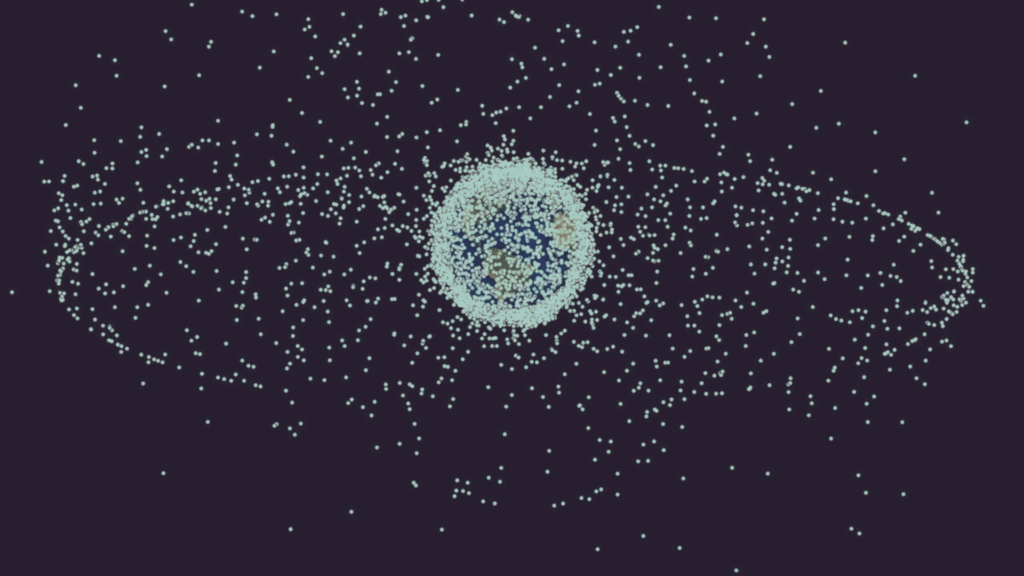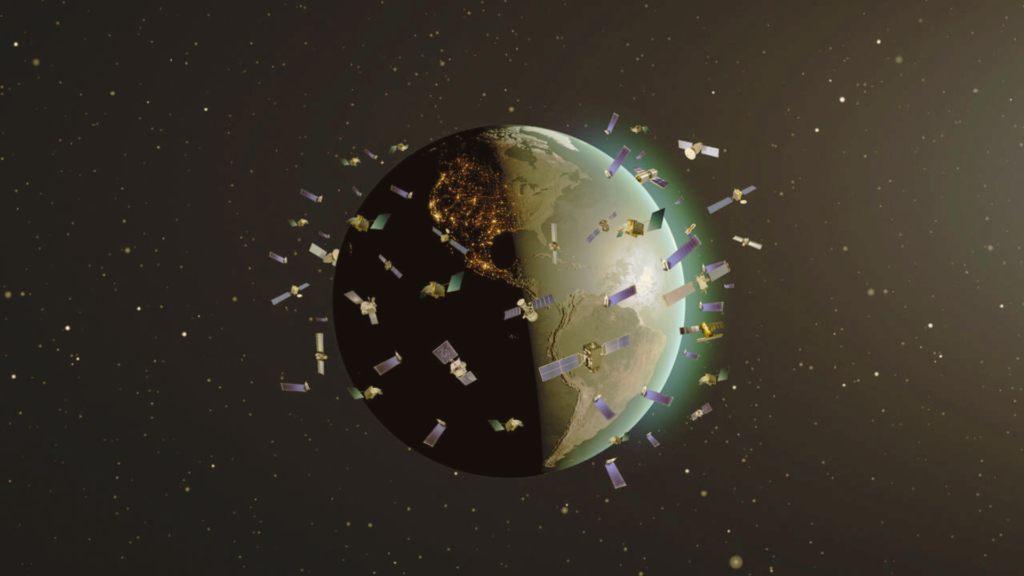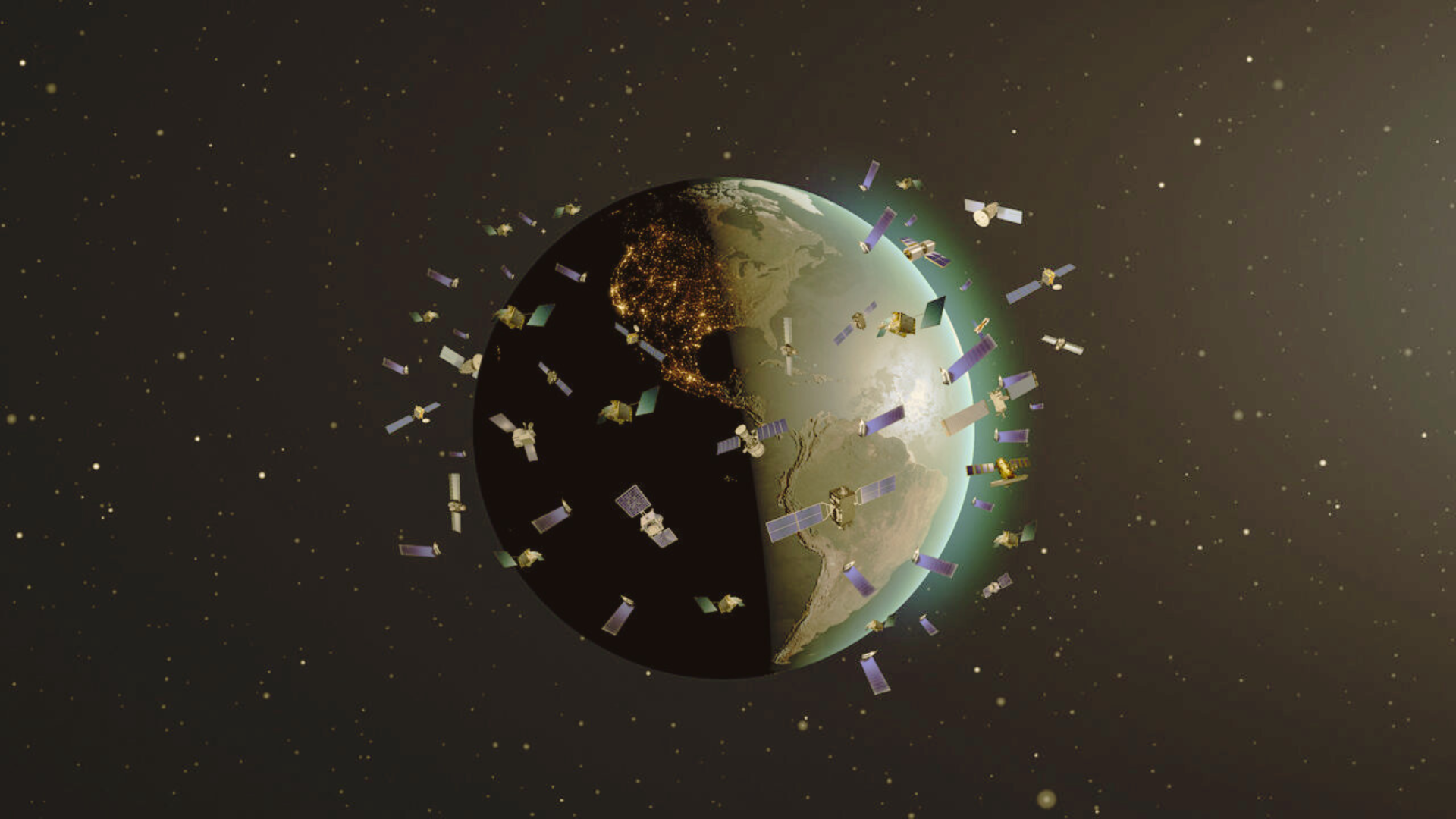Introduction:
Unsustainable satellite waste, which is prevalent all around our planet in the expanse of space, is a growing threat to its sustainability. As we look up at the night sky, taking in the stars and the magnificence of the cosmos, we are unaware of the invisible threats that are above us. The exponential increase in satellite launches puts our planet and its delicate biosphere in grave danger from abandoned satellites and other space junk. In this blog post, we examine the unsettling reality of satellite waste and its potential impacts on the Earth’s Sustainability.

The Alarming Rise of Satellite Clutter:
According to the most recent data, 7700 satellites were in orbit above the Earth as of May 4th, 2023. This astounding total includes active and dormant satellites as well as trash pieces. Even more problematic is the concentration of the majority of these spacecraft in low Earth orbit, which is also the location of the most important communications and observation satellites. This orbit’s density raises serious questions regarding the likelihood of collisions and the cascade effects of space debris. Unsustainable satellite waste poses a grave threat to the delicate balance of our planet’s ecosystem and the long-term sustainability of space activities.
The Silent Danger:
The rapid increase in the number of satellites and space debris fragments orbiting Earth has created a crowded and hazardous environment, increasing the risk of collisions and the cascading effect of space debris. Due to their high speed and potential for catastrophic collisions with active satellites, these abandoned satellites and debris fragments pose a significant threat to ongoing missions. Such collisions have effects outside of space as well. Risks to human life, property, and the environment can arise from debris that returns to Earth. We cannot afford to disregard the very real concerns posed by the potential for satellite malfunctions, interruptions in crucial communication networks, and tampered scientific observations.

The Urgent Need for Sustainable Solutions:
Without immediate action and responsible practices, the consequences of unsustainable satellite waste can range from disrupted communication networks and compromised scientific research to potential risks to human life and critical infrastructure on Earth. The solution to reducing the risks posed by space debris lies in programs like responsible satellite design, responsible satellite deployment, and responsible satellite retrieval missions. The international community, satellite operators, and space agencies must work together to create and implement strong rules and regulations that give priority to sustainability in satellite operations. To further clear up existing space debris, novel technologies for active debris removal and deorbiting systems must be created and put into use.
The Potential Consequences:
Unchecked satellite waste has far-reaching effects and puts the sustainability of the planet in grave danger. The Kessler Syndrome, a catastrophic situation when the density of trash is so high that collisions between objects create a self-sustaining cascade of debris, can be caused by the buildup of space debris and render particular orbits useless for future satellite launches. Critical services including communication, weather monitoring, navigational systems, and scientific research would all be severely impacted by this. The falling debris may also re-enter Earth’s atmosphere, endangering people’s lives and property on the ground.
Space Sustainability Initiatives:
Numerous space sustainability efforts have been started as a response to the growing worries over unsustainable satellite garbage. Guidelines and best practices have been established by organizations like the International Astronautical Federation (IAF) and the United Nations Office for Outer Space Affairs (UNOOSA) to encourage ethical and sustainable space activities. To ensure a sustainable space environment, it is crucial to build databases to track space debris, develop rules for satellite operators, and encourage international collaboration in space debris reduction.

Conclusion:
Consequently, the sustainability of Earth and the precarious balance of our planet’s ecology are immediately threatened by the exponential growth of unsustainable satellite garbage. A persistent risk of collisions and the possible cascading effect of space debris are presented by the overpopulated space environment, which is filled with abandoned satellites and trash bits. Such collisions have a variety of negative effects, including hampered scientific research, risks to human life and property on Earth, and even the disruption of communication networks.
In conclusion, there is an urgent need for attention and coordinated action to address the issue of unsustainable satellite trash. We can reduce the risks connected with space debris and guarantee a sustainable space environment for future generations by putting a priority on sustainable practices, investing in cutting-edge technologies, and encouraging international cooperation. Let’s cooperate to conserve the wonders of the universe and the sustainability of Earth.








